Overview
This article delves into the crucial topic of identifying early signs of autism in children, highlighting the significance of recognizing these indicators for timely intervention. As a parent, understanding these signs can be a vital step in supporting your child's development. Key signs to watch for include:
- Communication delays
- Social interaction difficulties
- Repetitive behaviors
- Sensory sensitivities
- Unusual emotional responses
Each of these indicators is backed by statistics and expert insights, underscoring the importance of early assessment and intervention. By acting early, you can improve outcomes for children on the spectrum and provide them with the support they need to thrive.
Recognizing these signs can be daunting, but you are not alone in this journey. Many parents share similar experiences, and it’s essential to connect with others who understand the challenges. Have you noticed any of these behaviors in your child? Engaging with a community can provide comfort and shared knowledge.
In conclusion, if you suspect that your child may be showing early signs of autism, please consider seeking professional guidance. Early intervention can make a significant difference in your child's life, leading to better outcomes and a brighter future. Reach out to specialists or support groups in your area to explore resources available to you and your family.
Introduction
As the prevalence of autism spectrum disorder continues to rise, understanding its early signs has never been more crucial for parents. Recognizing these indicators can open the door to timely interventions that significantly enhance developmental outcomes for children. Yet, with so many potential signs, how can parents discern which behaviors truly warrant further investigation? This article explores nine key signs of autism, empowering parents with the knowledge they need to support their child's unique journey. Together, we can navigate this path with compassion and understanding.
About ASD Media: Empowering Parents with Autism Insights
At ASD Media, we are deeply committed to advancing the implementation of ABA therapy. We provide valuable insights and strategies that tackle challenges and enhance outcomes for families. Our mission is to create a nurturing community where individuals can share their experiences and learn from one another. We offer a wealth of resources and assistance tailored for both parents and professionals, empowering them to unlock the potential of children with developmental disorders and ADHD. This collective effort is vital for fostering a greater awareness of the signs your child has autism and their early indications.
Recent statistics reveal a concerning trend: diagnoses related to autism spectrum disorder are on the rise. The National Survey of Children’s Health reports a confidence interval of 16.8 to 18.8 percent for youth identified with the condition. This underscores the importance of community support in navigating the complexities of care for individuals on the spectrum. Influential voices in the neurodiversity community, such as Temple Grandin, remind us that 'Different, not less.' This statement highlights the need to recognize and celebrate the unique strengths of those on the spectrum.
Understanding the financial implications of developmental disorder services is also crucial for families seeking support. For instance, the typical cost of adaptive behavior services hovers around $82.25. By integrating these considerations, ASD Media aims to empower parents and professionals alike, ultimately leading to improved outcomes for children and their families. We invite you to join our community, share your experiences, and access the support you need to navigate this journey together.
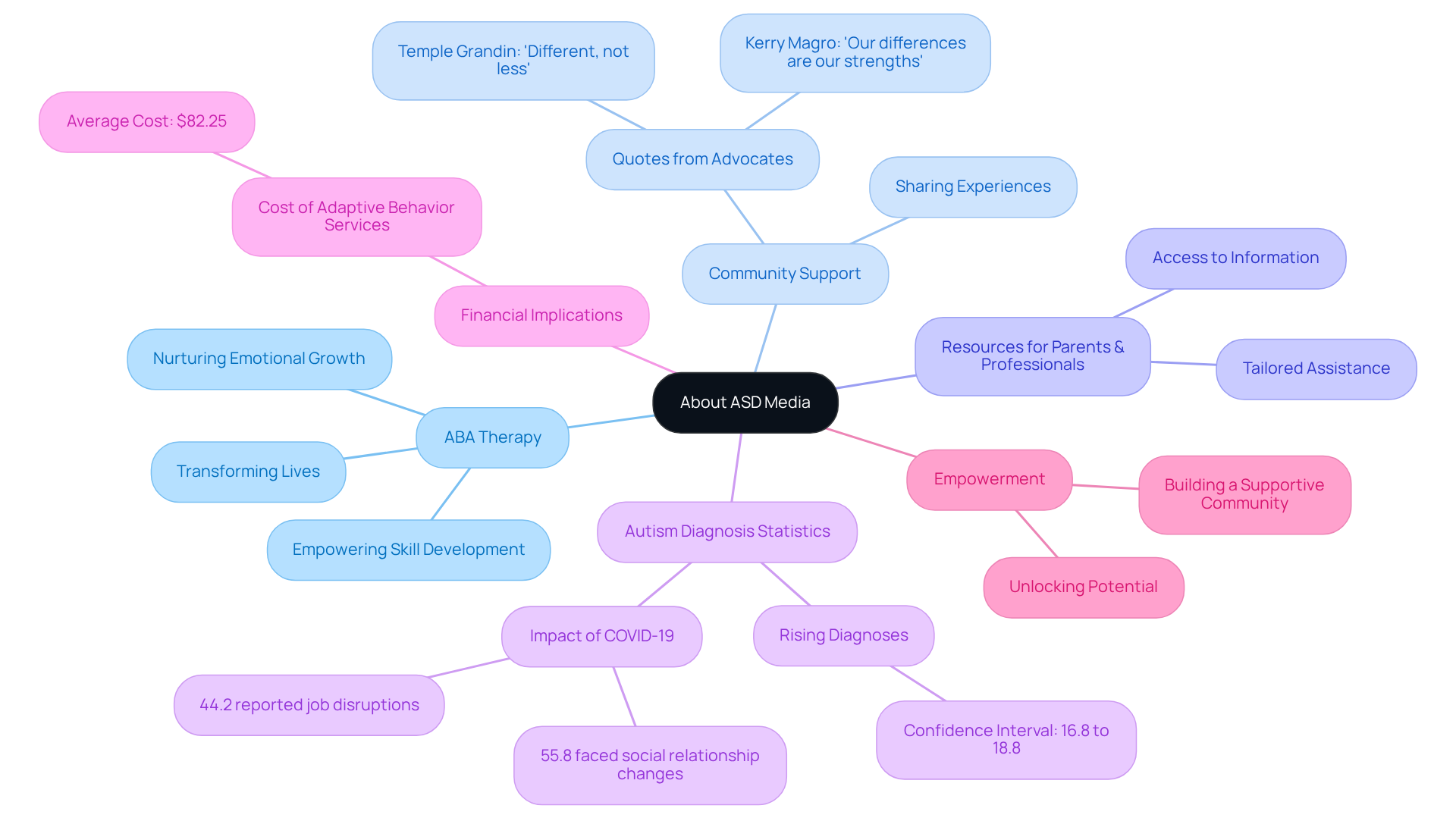
Communication Delays: Recognizing Early Signs of Autism
Communication delays can be one of the earliest signs your child has autism, so it’s important for parents to be aware. By the age of 12 months, many children may not babble or use gestures like pointing, which are fundamental for early communication development. Research shows that by 24 months, around 30% of children do not use two-word phrases, a key milestone in language acquisition.
Recognizing these communication delays is essential, as early intervention can lead to significantly better developmental outcomes. Children who receive timely support are more likely to improve their communication skills and achieve better long-term results. In fact, 1 in 36 children in the United States are diagnosed with autism, which underscores the importance of identifying the signs your child has autism early.
Therefore, it’s crucial for parents to stay vigilant and seek evaluations promptly to ensure their child receives the necessary support. As Kerry Magro wisely states, 'Autism is not a tragedy; it's a unique and beautiful way of being.' If you notice communication delays in your child, consider reaching out to a specialist to explore early intervention options together.
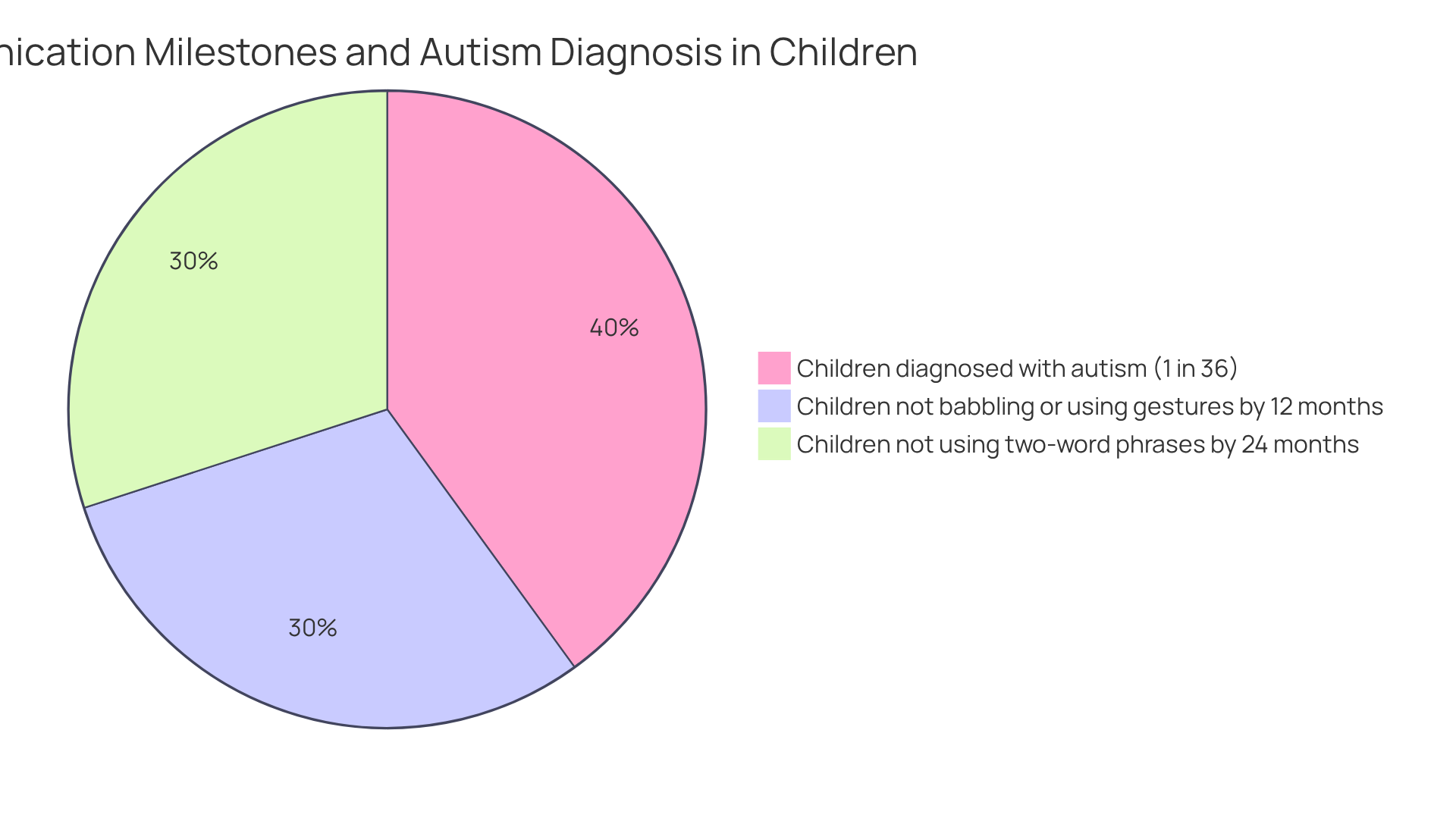
Social Interaction Difficulties: Key Indicators of Autism
Children with developmental disorders often face significant challenges in social interactions, which may manifest as hesitance to engage with peers or adults. Did you know that approximately 70% of these children struggle with eye contact? This is a crucial indicator of their social difficulties. Moreover, with 1 in 31 youths in the U.S. diagnosed with autism, recognizing these challenges early is essential. Many children may also find it difficult to interpret social cues, leading them to prefer solitary play.
Early identification of these challenges is vital, as it empowers parents to begin social skills training, which has proven effective in enhancing communication and interaction abilities. Consider organized playdates and social skills groups; these interventions can foster better social engagement and help children navigate social situations more effectively. Experts emphasize the importance of targeted social skills training for children with ASD. Richard E. Frye notes, "Social deficits characterize ASD and lead to considerable impairment." This training not only improves their ability to connect with others but also significantly enhances their overall quality of life.
If you notice signs your child has autism, particularly difficulties with social interaction, seeking an early assessment is encouraged. The average age for diagnosis in the U.S. is 5 years, with the first intervention typically occurring at around 4.7 years. Remember, taking action early can make a world of difference in your child's social journey.
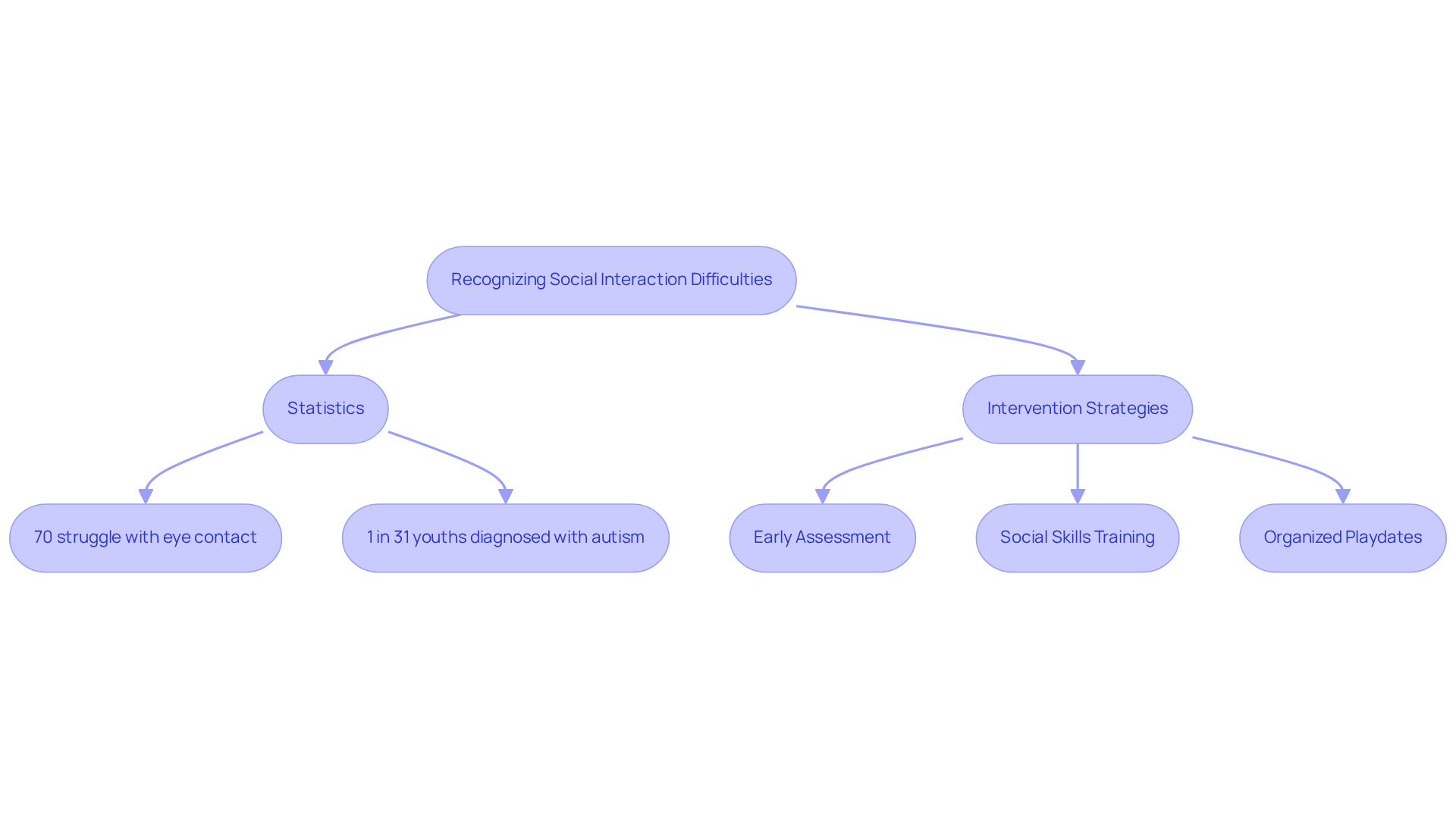
Repetitive Behaviors: Understanding Autism Symptoms
Repetitive actions, such as hand-flapping, rocking, or repeating phrases, are often seen in young individuals with developmental disorders. These behaviors can be comforting responses to anxiety or sensory overload, serving as important coping mechanisms.
As parents, it’s essential to recognize these patterns; they may be signs of developmental disorders that warrant further evaluation. By being attentive to these behaviors, you can take proactive steps toward understanding and supporting your child’s needs.

Sensory Sensitivities: A Common Sign of Autism
Sensory sensitivities are a common trait among youth with autism, impacting between 69% to 93% of this group. These sensitivities can manifest in various ways, such as heightened reactions to sounds, lights, or textures. For example, a young person might cover their ears in response to loud sounds or decline to wear specific materials due to discomfort. Understanding these reactions is essential for parents striving to recognize the signs your child has autism while creating supportive environments that cater to their children's needs. As Ana Gentil-Gutiérrez notes, "Children with Autism Spectrum Disorder (ASD) frequently have difficulties in processing sensory information, which can limit their participation in different contexts, such as school."
To foster a sensory-friendly atmosphere, consider implementing the following strategies:
- Minimize sensory overload: Reducing loud noises and bright lights in the home can help. Soft lighting and quiet spaces contribute to a calming environment.
- Incorporate sensory tools: Noise-cancelling headphones, weighted blankets, or fidget toys can assist young ones in managing their sensory input effectively.
- Establish routines: Consistent daily routines offer predictability, which is reassuring for kids with developmental differences.
- Create sensory zones: Designate specific areas in the home where children can retreat when feeling overwhelmed, equipped with calming items like soft cushions or soothing music.
Expert insights highlight the significance of modifying surroundings to meet the sensory needs of young individuals with developmental differences. By acknowledging and addressing these sensitivities, caregivers can better recognize the signs your child has autism, significantly enhancing their comfort and well-being, ultimately promoting better engagement in daily activities and social interactions.
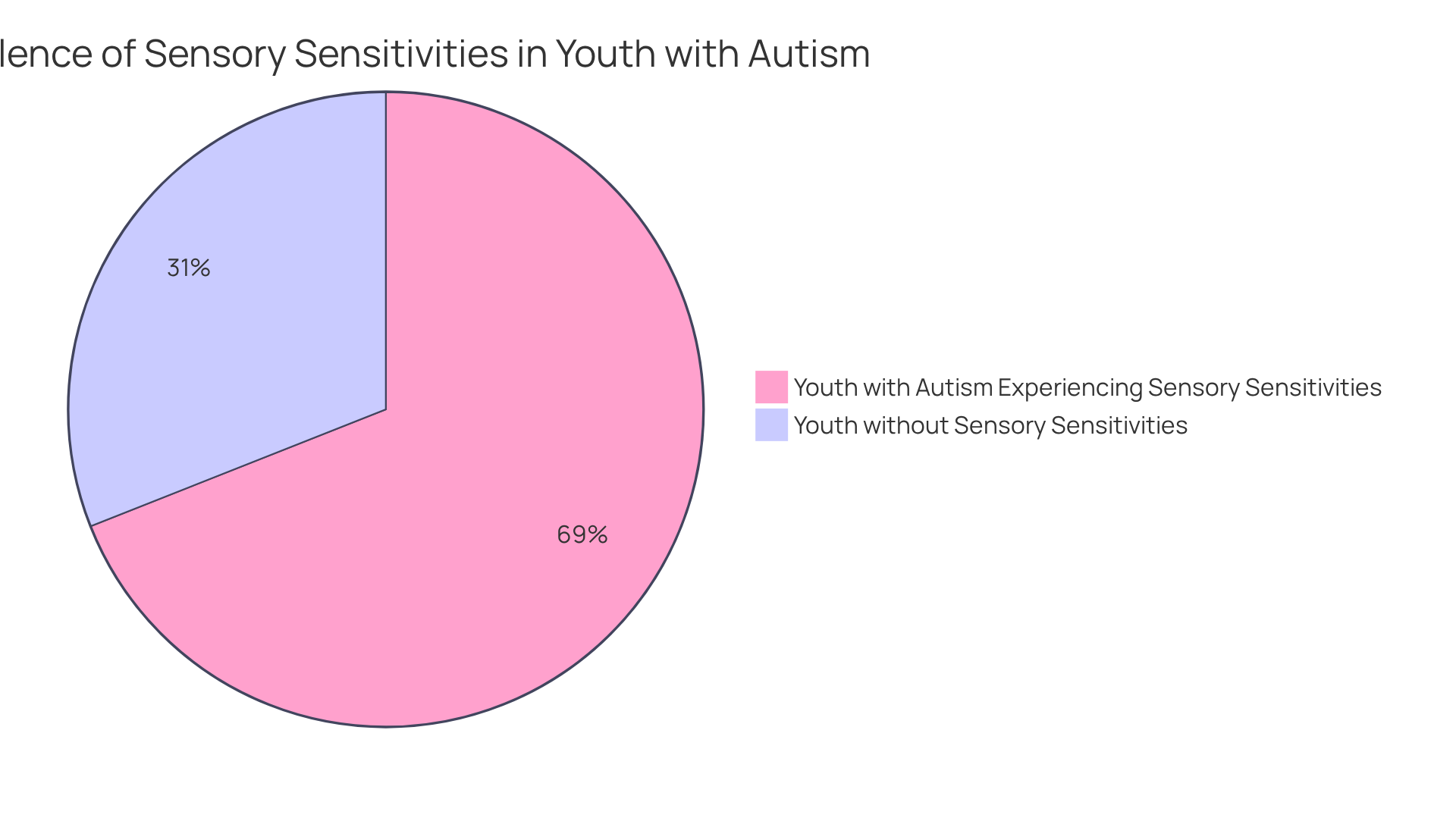
Lack of Joint Attention: An Early Autism Indicator
Joint attention is the ability to share focus on an object or event with another person. It’s a fundamental skill for social interaction and communication, and it’s especially important for children on the spectrum. Many of these children may struggle with this skill, which can be considered signs your child has autism; for instance, they might not point to show interest or glance back at a parent when something captures their attention.
Research indicates that approximately 36% of children with developmental disorders show significant delays in joint attention abilities. This can often serve as an early indicator among the signs your child has autism. Developmental psychologists emphasize that a lack of joint attention is not merely a symptom; it is one of the signs your child has autism and a crucial indicator for initial diagnosis. For example, the signs your child has autism include:
- The failure to initiate joint attention by 8 months
- The failure to respond by 12 months
These are associated with a higher risk of later developmental disorders.
However, there is hope. Early intervention that focuses on enhancing joint attention can lead to successful outcomes, improving social skills and communication abilities. Engaging in targeted activities, such as playful turn-taking games and interactive storytelling, can make a significant difference in developmental trajectories. Recognizing the signs your child has autism is vital, as it underscores the importance of seeking support and resources for your child’s growth.
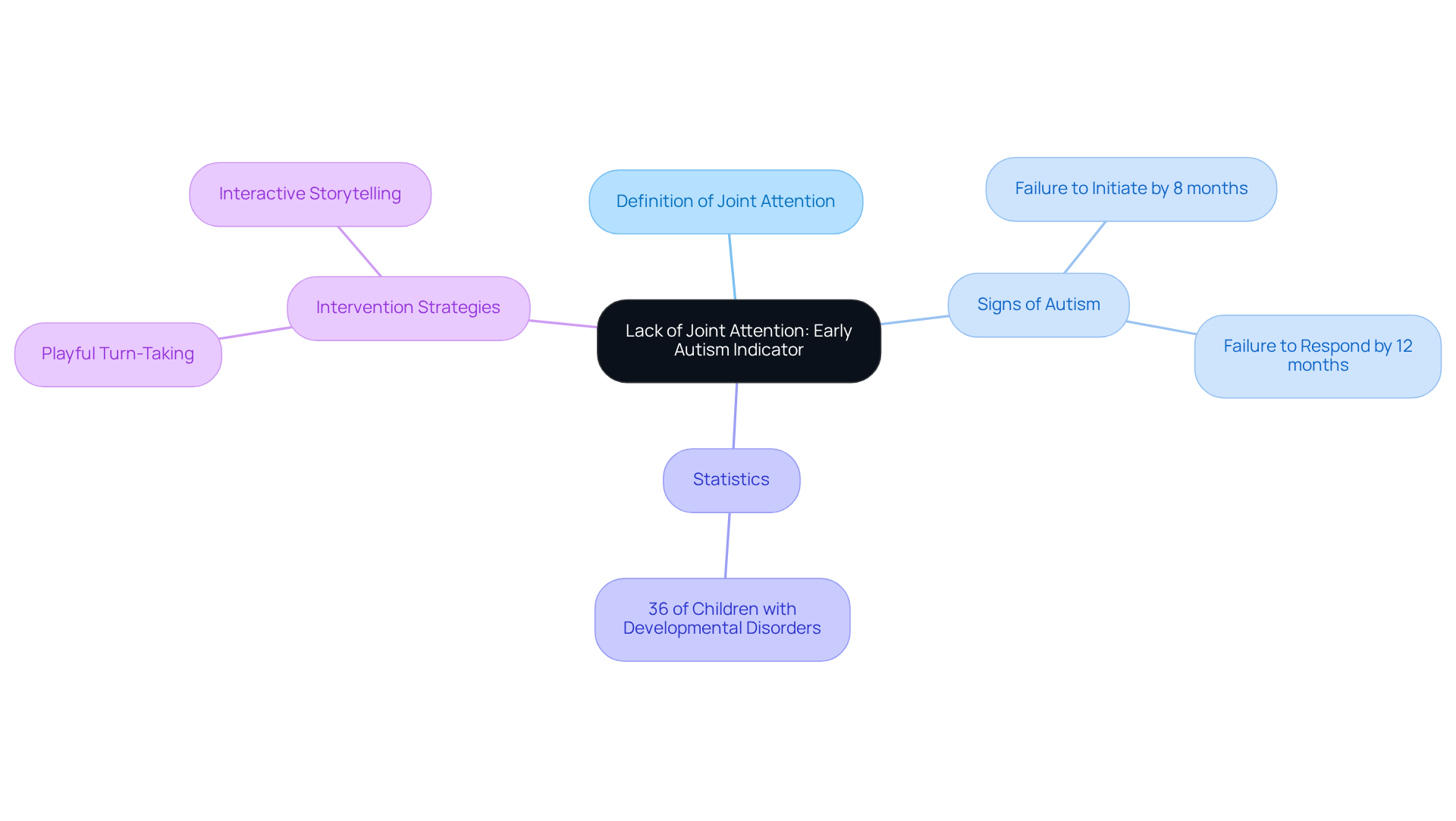
Intense Interests: Recognizing Autism Traits
Children on the spectrum often showcase profound interests in specific subjects like trains, dinosaurs, or numbers. These passions are not merely hobbies; they serve as vital indicators of neurodiversity and significantly contribute to a young person's development. Research shows that a considerable percentage of young individuals on the autism spectrum cultivate specific interests that are both intense and enduring. Parents can leverage these interests to create engaging learning opportunities, enhancing language development and social interactions. For instance, tapping into a child's fascination with animals can lead to themed activities that bolster communication skills and foster connections with peers.
Experts emphasize that nurturing these unique interests can greatly improve a young person's overall well-being, providing comfort and stability in their lives. These interests can also serve as effective coping strategies during stressful times, helping young individuals navigate challenging situations. By weaving these interests into educational practices, caregivers can inspire exploration and ignite a young person's passion for learning. This approach not only supports cognitive development but also assists children with developmental challenges in forming meaningful relationships, ultimately enriching their lives and nurturing a sense of belonging.
It is crucial to differentiate between healthy engagement with special interests and harmful obsession, as this balance is vital for a young person's well-being. Encouraging inclusion in recreational programs also supports children with developmental differences, allowing them to pursue their interests alongside their peers. As Jordan CJ notes, success in connecting with youth on the spectrum is often gauged by their happiness and fulfillment, which can be significantly enhanced through the nurturing of their special interests.

Behavioral Regression: A Warning Sign for Autism
Behavioral regression in young individuals with developmental disorders can manifest as a loss of previously acquired abilities, particularly in communication and social interactions. This phenomenon serves as a critical warning sign, indicating the signs your child has autism and urging parents to seek professional evaluation. Research reveals that around 10.2% of individuals with autism experience regression, compared to 2.05% of young individuals without ASD, underscoring the significance of regression in those with autism. Language-related regression is notably prevalent, affecting approximately 74.03% of these youths. Experts emphasize the urgency of identifying the signs your child has autism promptly for effective intervention.
As one expert in development insightfully noted, 'Addressing behavioral regression in children with autism requires a comprehensive, multidisciplinary approach that emphasizes early detection, individualized intervention, and family involvement.' Additionally, the CEO of CrossRiverTherapy remarked, 'Consistent ABA therapy serves as a cornerstone in stabilizing behavioral challenges and preventing further loss of skills.' Early intervention strategies, such as Applied Behavior Analysis (ABA) therapy, have proven successful in mitigating the effects of regression, aiding children in regaining lost skills and enhancing their overall development.
The average age of regression onset is approximately 22.34 months, making it crucial for caregivers to remain vigilant during this period. Moreover, the financial implications of care for individuals with developmental disorders are significant, with expenses totaling $268 billion in 2015 and projected to rise to $461 billion by 2025. By being vigilant and proactive, parents can greatly improve their children's chances for positive outcomes. Your awareness and action can make a meaningful difference in their journey.
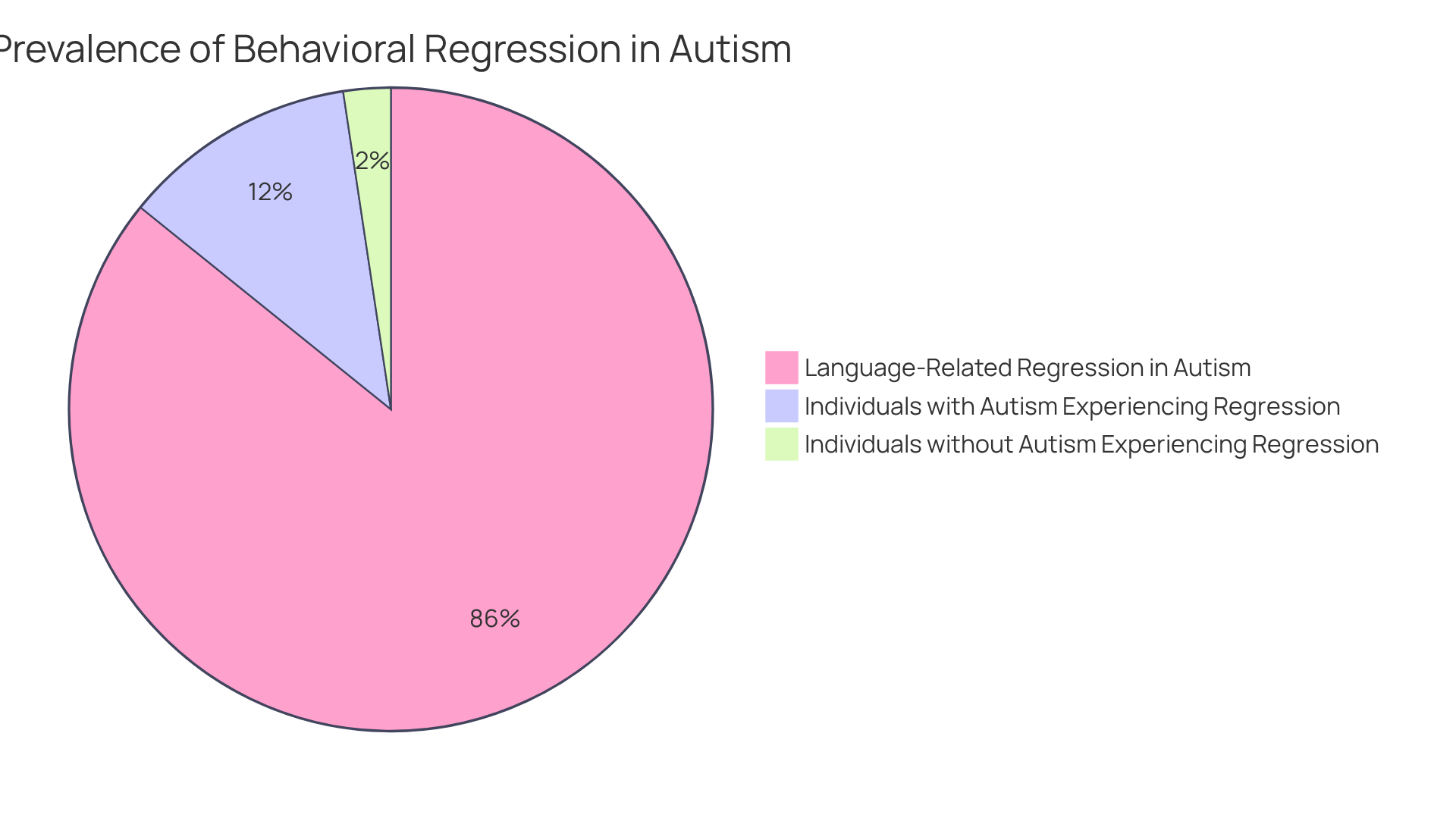
Unusual Emotional Responses: Indicators of Autism
Children with developmental differences often display emotional reactions that can seem unusual, manifesting as intense responses to minor changes or challenges in expressing their feelings. Research indicates that approximately 70% of individuals with autism may experience significant emotional dysregulation, leading to inappropriate laughter or crying in various situations.
For parents, recognizing these emotional patterns is crucial, as it allows them to better understand their child's emotional landscape. As Gráinne Hope, founder of Kids’ Classics, emphasizes, "Understanding these emotional responses is vital for guardians to support their kids effectively."
By identifying the signs your child has autism early on, parents can seek the right support and interventions, fostering a nurturing environment for their child's emotional growth. For instance, the 'Creative Engagement at CHAS' project showcases effective strategies for addressing emotional reactions in autistic youth through the creative arts.
Experts suggest that understanding these emotional responses not only aids in managing challenging behaviors but also enhances the overall well-being of individuals with autism. Parents are encouraged to closely observe their child's reactions and consult with professionals to develop personalized strategies for emotional regulation.
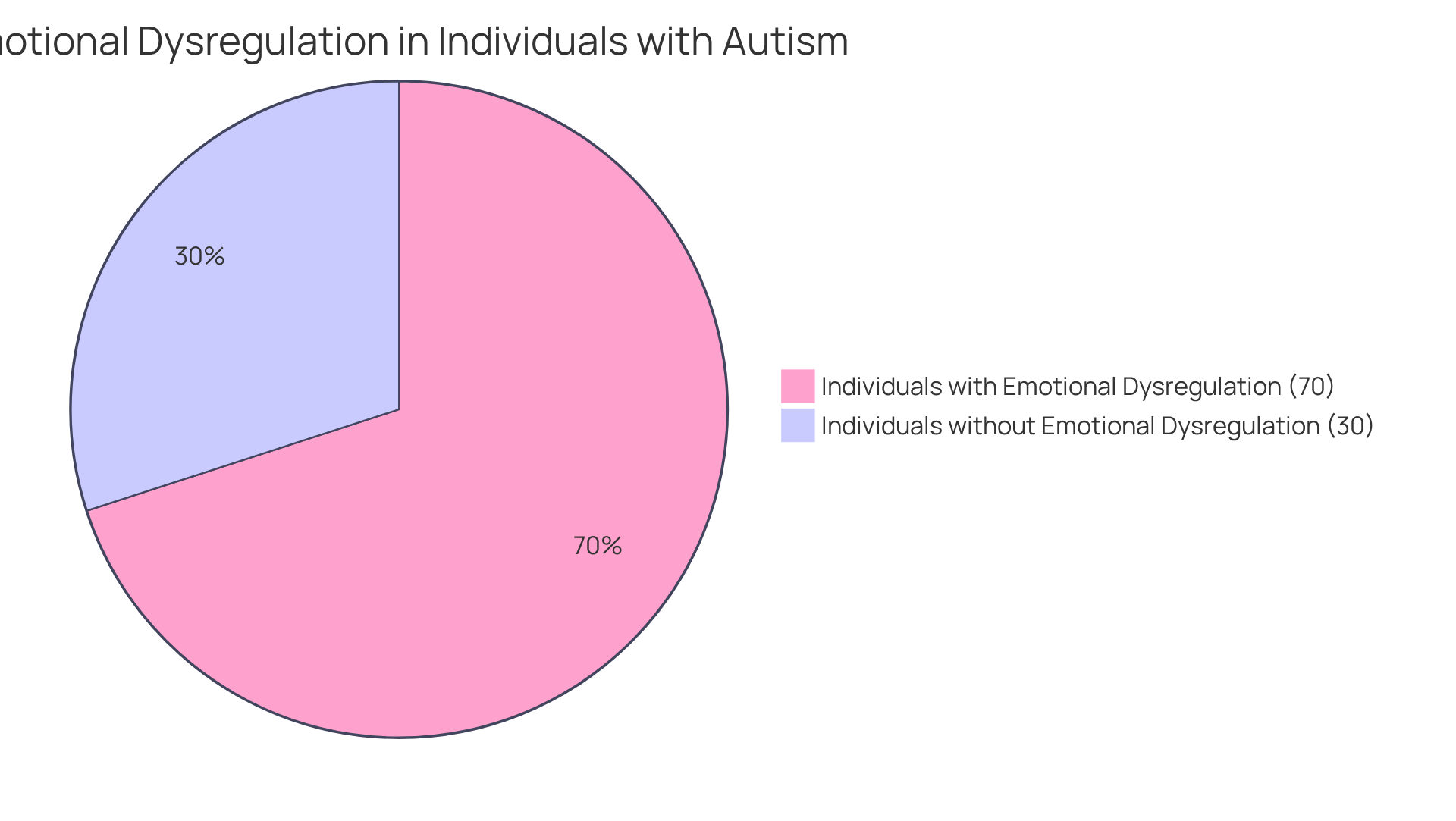
Seek Professional Evaluation: Confirming Autism Signs
When parents notice multiple signs your child has autism, it becomes essential to seek a professional assessment. This step is crucial, as early diagnosis can pave the way for effective interventions and support tailored specifically to the child's unique needs.
Professionals can offer valuable guidance on the next steps and the resources available to families navigating the complexities of autism.
Remember, you are not alone in this journey—reaching out for help is a strong and positive action.
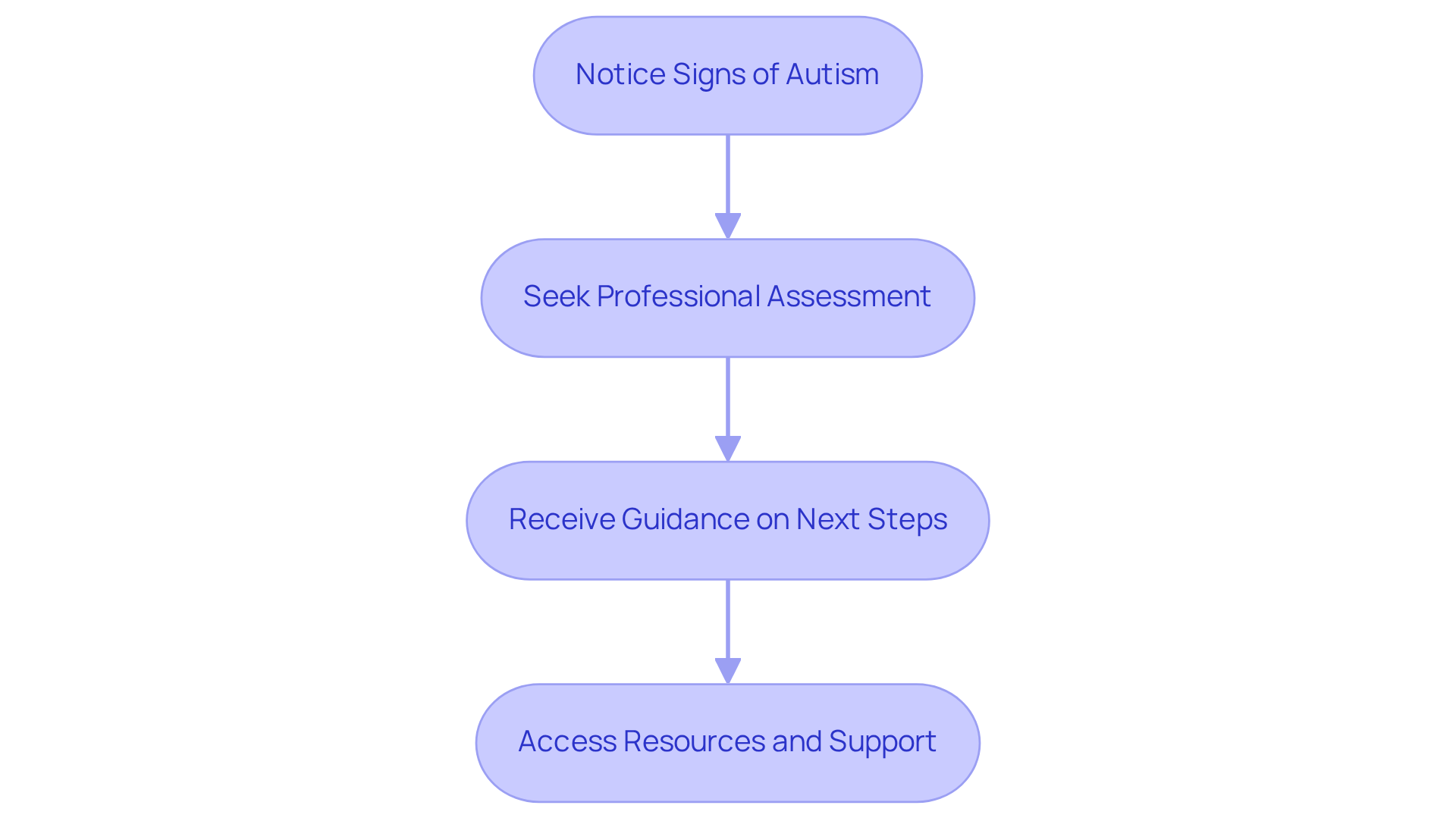
Conclusion
Recognizing the signs of autism in children is a crucial step in ensuring they receive the support they need for optimal development. Early detection is vital; awareness of key indicators—such as communication delays, social interaction difficulties, and sensory sensitivities—can significantly influence a child's journey. By identifying these signs early, parents can take proactive measures to seek evaluations and interventions, ultimately fostering better outcomes for their children.
The insights shared throughout this discussion underscore that autism is characterized by a diverse range of behaviors and traits. From intense interests and repetitive actions to unusual emotional responses and behavioral regression, each sign serves as a piece of the puzzle in understanding a child's unique needs. The statistics presented reinforce the urgency of early intervention, illustrating how timely support can lead to improved communication skills, social interactions, and overall quality of life.
The journey of recognizing and addressing autism is not one to be taken alone. Parents are encouraged to seek professional evaluations when they notice signs, as these assessments pave the way for tailored support and resources. By fostering a nurturing and informed environment, caregivers can help their children navigate the complexities of autism, ultimately empowering them to thrive. Awareness and action are vital—together, they can make a meaningful difference in the lives of children with autism and their families.
Frequently Asked Questions
What is the mission of ASD Media?
The mission of ASD Media is to advance the implementation of ABA therapy by providing valuable insights and strategies that tackle challenges and enhance outcomes for families, creating a nurturing community for sharing experiences and learning.
What resources does ASD Media offer to parents and professionals?
ASD Media offers a wealth of resources and assistance tailored for both parents and professionals, empowering them to unlock the potential of children with developmental disorders and ADHD.
Why is community support important for families dealing with autism?
Community support is vital for navigating the complexities of care for individuals on the autism spectrum, especially as diagnoses related to autism spectrum disorder are on the rise.
What are some statistics regarding autism diagnoses?
Recent statistics indicate that 16.8 to 18.8 percent of youth are identified with autism spectrum disorder, highlighting the need for increased awareness and support.
What are the typical costs associated with adaptive behavior services?
The typical cost of adaptive behavior services is around $82.25, which families need to consider when seeking support for developmental disorders.
What are some early signs of autism related to communication delays?
Early signs of autism include communication delays such as not babbling or using gestures like pointing by 12 months, and not using two-word phrases by 24 months.
How important is early intervention for children with autism?
Early intervention is crucial as it can lead to significantly better developmental outcomes, improving communication skills and achieving better long-term results.
What social interaction difficulties might children with autism face?
Children with autism may struggle with eye contact, interpreting social cues, and may prefer solitary play, indicating significant challenges in social interactions.
What role does social skills training play for children with autism?
Social skills training is effective in enhancing communication and interaction abilities, empowering children to navigate social situations better and improving their overall quality of life.
When should parents seek an assessment for autism?
Parents should seek an assessment if they notice signs of autism, particularly difficulties with social interaction, as early diagnosis and intervention can make a significant difference.




